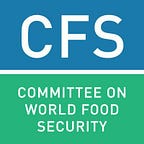Community Forest
Boon for a Sound Agro Ecosystem in Nepal
Thampopakha community forest is one of the best community forests of Muchchok Village Development Committee (VDC), Gorkha, Nepal with more than 400 vegetation species. It had been heavily encroached by residents before handing over to the community forest. “Now, there is an 80% increase in vegetation and almost 50% increase in our agro farm,” says Thakur Prasad Badu, 61 years old, a retired teacher from Chaturmala Higher Secondary School, Muchchok. Badu donated 7.65 ha of his private land to Thampopakha community forest in July 15, 2010 with the expectation of the preservation of important plant and animal species.
“Before giving my land to the community forest, I was worried about the plant and animal species which were being encroached by local people. I, alone, could not control it. Afterwards, I came up with the idea to hand over my land to the community forest.” Recently, 44 households with a population of 201 are directly benefitting from this community forest project. As part of the effort, he personally has preserved almost 250 plant species in his farm.
He is fond of introducing new plant species in his garden which are suitable to the climate. So far he has introduced almost 25 species to his botanical garden bringing them from other districts. “My younger son, who works in a Green Herb Project, helps me to introduce new species in my garden,” he continues. His family supports his decision and he is being praised for his devotion to nature conservation. His wife, Uma Badu, 40 years old, says, “he also treats people by providing different Ayurvedic medicines which he prepares himself. Many poor people visit him as access to good hospitals is limited. He is a magician and can treat many types of disease.”
Mr. Badu explains that he doesn’t have magic powers but since his teens he has realized the importance of plant and animal conservation to the human world. He gives credit to his deceased father, who inspired him to use the creations of nature, and the Government of Nepal for easing him into conservation.
Community forest is a participatory approach in forest management in Nepal which was started in the 1970s with the objective of controlling, protecting and managing forest resources by local people. The Community Forest Act (1993) has given local people significant rights in the management and harvest of forest resources.
Since then, this act has played a major role in forest conservation and nature conservation. According to the Ministry of Forest and Soil Conservation (2016), 1,813,478 hectares of land have been handed over as community forests to user groups for management and utilization of forest resources. Similarly, the 2015 Annual Monitoring and Analysis Report of the District Forest Office of Gorkha mentioned that Muchchok VDC consists of 434.43 hectares of land as community forest providing direct benefit to 941 households with a population of 5,640.
The visible impacts of the community forest programne in Nepal include restored degraded forest land, resumed greenery, increased biodiversity, increased supply of forest products, empowered women, poor and disadvantaged groups, as well as the promotion of income generation and community development activities, and improved livelihood. Among other dimensions, the community forest programme has focused on timber plant protection which will ultimately play a major role in conservation and preservation of non-timber forest products.
In the case of the Muchchok locality, protection of the berries, Shorea robusta, Schima wallichii, Castanopsis indica, Alnus nepalensis, Rhodenderon, and many more have been given emphasis. This programme has been successful in two ways. The first is the direct improvement in plant and animal conservation, and the second is to have compelled farmers to grow different plants for different purposes like timber, fodder, medicine and so on. Like Mr. Badu each of the 941 household of Muchchok have started their own plant conservation in their farms, ultimately maintaining healthy agroforestry.
Most of the residents of Muchchok plant various kinds of plants like Brassispsis hainla, Garuga pinnata, Erythrina strica, Litsea polyantha, Ficus cunia, Ficus hispida, Ficus lacor, Ficus nemoralis, Albizza procera, Morus indica, Aesandra butyraceae, and many more for fodder and timber, and medical plants. Nepti Maya Tamang, 51, says, “before, all of us had to compete for forest resources. Now we plant what we need in our own farm and have no worries. Also, our water sources used to dry up in April-May and we used to have shortages of drinking water but now we have come up with solutions to all those problems. Community forests have really been good for us.” The maintenance of a healthy agro ecosystem has provided farmers with many direct and indirect benefits; increased crop yields, livestock benefits, energy saving, conservation and preservation of different plant species, soil conservation and improved soil quality, sequestration of atmospheric carbon, and increased biodiversity.
To sum up, community forests in Nepal are flourishing and conserving flora and fauna. This programme has directly increased the accountability of local community people in natural resource management. The transparent impact of community forests can be seen in Mr. Badu, who, having realized the importance of plant species has devoted himself to conservation. Like him, other residents of Muchchok are aware of the importance of conservation for the existence of human life and are working together for it.
This article was written by Ishwora Dhungana and Dinesh Panday.
Ishwora Dhungana obtained B.Sc. in Agriculture from Tribhuvan University in 2016 and then working as Livelihood officer at Multi-Dimensional Action for Development Nepal. He can be contacted at ishworadhungana@gmail.com or through LinkedIn.
Dinesh Panday is a PhD scholar in Soil Fertility at University of Nebraska-Lincoln. He is also working as Nepal representative at Young Professionals for Agricultural Development (YPARD). He can be contacted at ypardnepal@gmail.com or through LinkedIn.
All opinions expressed belong solely to the author and do not necessarily represent the views of the Committee on World Food Security (CFS).
Originally published at www.fao.org.
